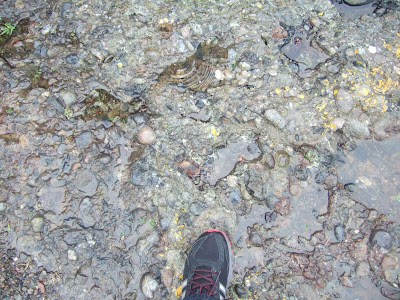The U.S. Supreme Court made a major ruling on electric energy policy this past week (FERC v Power Supply Association).
The ruling is favorable to efforts for shaping the electric peak demand curves. That is it will be easier for utilities to lower high electric demand by rewarding (paying) some consumers to shut off or lower their electric use during periods when the demand begins to surge.
"Not only do rates rise dramatically during these peak periods, but the increased flow of electricity threatens to overload the grid and cause substantial service problems. Faced with these challenges, wholesale market operators devised wholesale demand response programs, which pay consumers for commitments to reduce their use of power during these peak periods. Just like bids to supply electricity, offers from aggregators of multiple users of electricity or large individual consumers to reduce consumption can be bid into the wholesale market auctions. When it costs less to pay consumers to refrain from using power than it does to pay producers to supply more of it, demand response can lower these wholesale prices and increase grid reliability. Wholesale operators began integrating these programs into their markets some 15 years ago and FERC authorized their use. Congress subsequently encouraged further development of demand response." - US Supreme Court.
A group of power supply companies wanted to maintain their favorable position by limiting payments to businesses or groups that lower demand. That way they could charge large sums to meet peak demands without the worry of competition from someone getting paid to turn off the power.
Large consumers of electricity have been dining this in Washington State for some time in association with the BPA. As computers and data management get more sophisticated bring more users of electric power into lowering the peak demand curves should increase. Energy Northwest has been developing a demand response system with a number of public utility districts (PUDs) in Washington State that thus far has been passing tests to the system (Energy Northwest Demand Response Project).
The approach will save large electric consuming businesses money as they will get paid to cut back when demand gets high and this approach will keep prices down for everyone by avoiding having to pay very high peak demand rates to power producers. As systems get more sophisticated more businesses and perhaps even homes will be able to participate in the market and thus smooth out the energy demand curves.
Much of the marijuana in Washington State is grown in doors and are big consumers of electricity. Most marijuana production although very green in color is far from environmentally green for that reason. However, the business may be well suited for participation in shaping demand curves.
Avoiding peak demand will shape how various electric supplies will operate and if it works well minimize the need to build or turn on new peak power plants.
The ruling is favorable to efforts for shaping the electric peak demand curves. That is it will be easier for utilities to lower high electric demand by rewarding (paying) some consumers to shut off or lower their electric use during periods when the demand begins to surge.
"Not only do rates rise dramatically during these peak periods, but the increased flow of electricity threatens to overload the grid and cause substantial service problems. Faced with these challenges, wholesale market operators devised wholesale demand response programs, which pay consumers for commitments to reduce their use of power during these peak periods. Just like bids to supply electricity, offers from aggregators of multiple users of electricity or large individual consumers to reduce consumption can be bid into the wholesale market auctions. When it costs less to pay consumers to refrain from using power than it does to pay producers to supply more of it, demand response can lower these wholesale prices and increase grid reliability. Wholesale operators began integrating these programs into their markets some 15 years ago and FERC authorized their use. Congress subsequently encouraged further development of demand response." - US Supreme Court.
A group of power supply companies wanted to maintain their favorable position by limiting payments to businesses or groups that lower demand. That way they could charge large sums to meet peak demands without the worry of competition from someone getting paid to turn off the power.
Large consumers of electricity have been dining this in Washington State for some time in association with the BPA. As computers and data management get more sophisticated bring more users of electric power into lowering the peak demand curves should increase. Energy Northwest has been developing a demand response system with a number of public utility districts (PUDs) in Washington State that thus far has been passing tests to the system (Energy Northwest Demand Response Project).
The approach will save large electric consuming businesses money as they will get paid to cut back when demand gets high and this approach will keep prices down for everyone by avoiding having to pay very high peak demand rates to power producers. As systems get more sophisticated more businesses and perhaps even homes will be able to participate in the market and thus smooth out the energy demand curves.
Much of the marijuana in Washington State is grown in doors and are big consumers of electricity. Most marijuana production although very green in color is far from environmentally green for that reason. However, the business may be well suited for participation in shaping demand curves.
Avoiding peak demand will shape how various electric supplies will operate and if it works well minimize the need to build or turn on new peak power plants.



























































